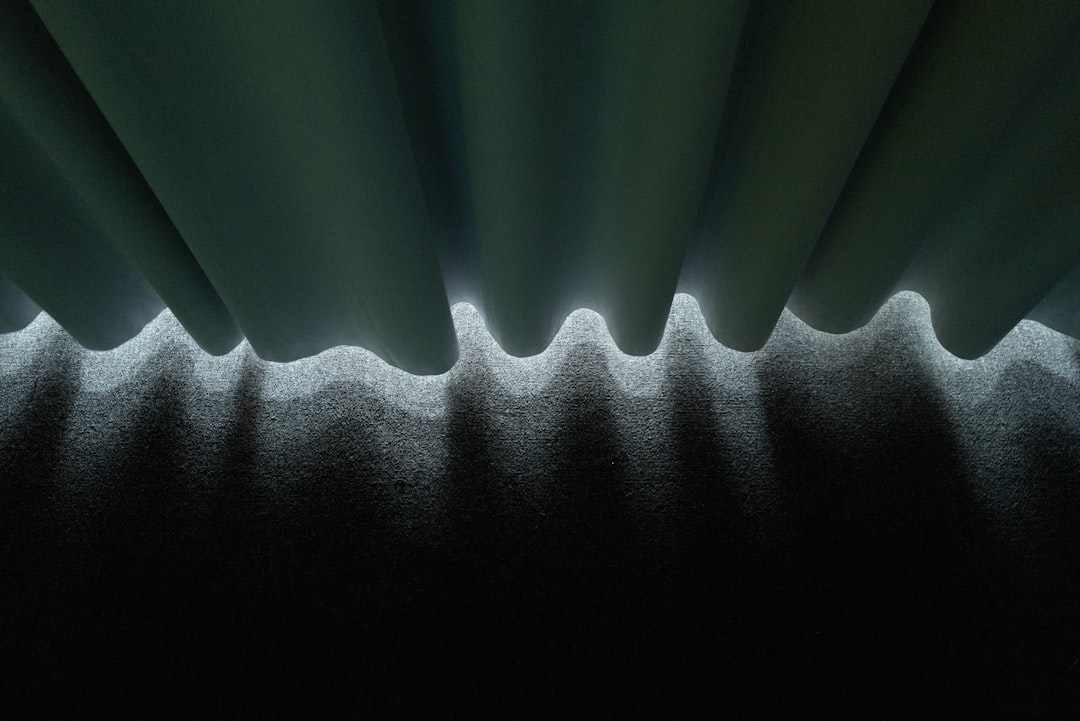Infrasound refers to sound waves that exist at frequencies below the range of human hearing, typically below 20 Hz. While you may not consciously perceive these low-frequency sounds, they can still have a significant impact on your environment and well-being. Infrasound is produced by various natural and artificial sources, including earthquakes, volcanic eruptions, and even the movement of large machinery.
Understanding infrasound is crucial because it can influence your physical and mental health, often in ways that are not immediately apparent. The phenomenon of infrasound has garnered attention in recent years due to its potential effects on human physiology. Research suggests that prolonged exposure to infrasound can lead to feelings of unease, anxiety, and even physical discomfort.
You might find yourself feeling restless or agitated without understanding why. This is where the importance of recognizing infrasound comes into play; by being aware of its presence, you can take steps to mitigate its effects on your life.
Key Takeaways
- Infrasound is low-frequency sound waves below the threshold of human hearing, typically below 20 Hz.
- Potential sources of infrasound in the home include appliances, HVAC systems, and even natural phenomena like wind and earthquakes.
- Health effects of infrasound exposure may include dizziness, fatigue, and discomfort, although more research is needed to fully understand the impact on human health.
- DIY infrasound detection methods can include using a microphone and a computer to analyze low-frequency sound waves.
- Using a smartphone app can be a convenient way to test for infrasound, although professional equipment may be more accurate.
Potential Sources of Infrasound in the Home
Your home may harbor several potential sources of infrasound that you might not even be aware of. Common household appliances such as refrigerators, air conditioners, and washing machines can emit low-frequency sounds that fall within the infrasound range. These appliances operate on motors and compressors that generate vibrations, which can translate into infrasound waves.
If you’ve ever felt a low rumble or vibration while your washing machine is running, you’ve experienced infrasound firsthand. In addition to appliances, external factors can also contribute to infrasound levels in your home. For instance, nearby construction sites or heavy traffic can introduce low-frequency noise into your living space.
Wind turbines and large HVAC systems are other culprits that may produce infrasound. By identifying these sources, you can better understand how they might be affecting your comfort and well-being within your home environment.
Health Effects of Infrasound Exposure

The health effects of infrasound exposure can be subtle yet profound. You may experience symptoms such as headaches, fatigue, or even a sense of pressure in your ears after prolonged exposure to infrasound. These symptoms can be easily dismissed as stress or fatigue from daily life, but they may actually be linked to the low-frequency sounds permeating your environment.
Research has shown that some individuals are more sensitive to infrasound than others, making it essential to pay attention to how you feel in different settings. Moreover, the psychological effects of infrasound should not be overlooked. You might find that certain environments make you feel anxious or uneasy without a clear reason.
This could be attributed to the presence of infrasound, which has been linked to feelings of discomfort and disorientation. Understanding these potential health effects empowers you to take action and create a more harmonious living space.
DIY Infrasound Detection Methods
| Method | Pros | Cons |
|---|---|---|
| Microbarometer Arrays | High sensitivity | Expensive |
| MEMS Microphones | Low cost | Lower sensitivity |
| Geophones | Robust | Require calibration |
If you’re curious about the levels of infrasound in your home, there are several DIY methods you can employ to detect it. One simple approach involves using a low-frequency microphone or a vibration sensor connected to a computer or smartphone. By recording sounds over a period of time, you can analyze the data for low-frequency waves that indicate the presence of infrasound.
Another DIY method involves using a simple pendulum or a homemade accelerometer to measure vibrations in your environment.
Engaging in these DIY detection methods not only satisfies your curiosity but also equips you with valuable information about your living space.
Using a Smartphone App to Test for Infrasound
In today’s digital age, technology has made it easier than ever to monitor various aspects of our environment, including infrasound levels. There are several smartphone apps available that can help you test for low-frequency sounds. These apps utilize your phone’s built-in microphone to capture sound data and analyze it for frequencies below 20 Hz.
By simply downloading an app and following the instructions, you can gain insights into the infrasound levels present in your home. Using a smartphone app for this purpose is not only convenient but also user-friendly. You can conduct tests at different times of day or during specific activities to see how infrasound levels fluctuate.
This real-time data can help you identify patterns and potential sources of discomfort within your living space. With just a few taps on your phone, you can take control of your environment and make informed decisions about how to improve it.
Building a Simple Infrasound Detector

If you’re feeling particularly ambitious, building a simple infrasound detector can be an exciting project that deepens your understanding of this phenomenon. You can create a basic detector using readily available materials such as a microphone, an amplifier, and a computer for data analysis. By assembling these components, you can design a device capable of capturing low-frequency sounds and providing you with valuable information about their presence.
The process of building an infrasound detector not only enhances your technical skills but also allows you to engage with the science behind sound waves. As you experiment with different configurations and settings, you’ll gain insights into how various factors influence infrasound levels. This hands-on experience can be both educational and rewarding, giving you a greater appreciation for the complexities of sound and its effects on your environment.
Conducting a Room-by-Room Infrasound Assessment
Once you’ve equipped yourself with detection methods, conducting a room-by-room assessment of your home is an effective way to identify areas with elevated infrasound levels. Start by testing each room individually while noting any appliances or external factors that may contribute to low-frequency noise. This systematic approach allows you to pinpoint specific locations where infrasound may be affecting your comfort.
As you conduct your assessment, pay attention to how different rooms feel during testing. You might notice that certain areas are more prone to discomfort or unease than others. By documenting your findings, you can create a comprehensive overview of infrasound levels throughout your home, enabling you to make informed decisions about where improvements are needed.
Interpreting Infrasound Test Results
Interpreting the results from your infrasound tests is crucial for understanding how these low-frequency sounds impact your living space. When analyzing data from your smartphone app or DIY detector, look for patterns that indicate elevated levels of infrasound during specific times or activities. For instance, if you notice higher readings when certain appliances are running, this could signal a need for adjustments or replacements.
Additionally, consider how the test results correlate with your personal experiences in each room. If you’ve identified areas with high infrasound levels that coincide with feelings of discomfort or anxiety, this information is invaluable for making changes to improve your environment. By combining quantitative data with qualitative observations, you’ll gain a holistic understanding of how infrasound affects your home life.
Comparing Infrasound Levels in Different Locations
To further enhance your understanding of infrasound exposure, consider comparing levels across different locations—both inside and outside your home. This comparative analysis can reveal how various environments influence infrasound exposure and its associated effects on well-being. For example, testing levels at nearby parks or busy streets may provide insights into how urban noise pollution contributes to overall sound exposure.
By gathering data from multiple locations, you can identify trends and patterns that inform your decisions about where to spend time or how to modify your living space for optimal comfort. This broader perspective allows you to appreciate the nuances of sound exposure and its implications for health and well-being.
Tips for Minimizing Infrasound Exposure in the Home
Once you’ve identified sources of infrasound within your home, implementing strategies to minimize exposure becomes essential for enhancing your quality of life. Start by relocating appliances that generate significant low-frequency noise away from living areas or bedrooms whenever possible. Additionally, consider investing in soundproofing materials such as acoustic panels or heavy curtains that can help absorb unwanted sound waves.
Another effective strategy involves creating quiet zones within your home where low-frequency noise is minimized. Designate specific areas for relaxation or work that are free from appliances known to produce infrasound. By consciously curating your environment, you can foster a more peaceful atmosphere conducive to well-being.
Seeking Professional Help for Infrasound Issues
If you’ve taken steps to assess and mitigate infrasound exposure but still experience discomfort or health issues, seeking professional help may be necessary. Acoustic consultants specialize in sound analysis and can provide expert guidance on identifying and addressing sources of infrasound within your home environment. They have access to advanced equipment and methodologies that can yield more accurate assessments than DIY methods alone.
Consulting with professionals not only helps pinpoint specific issues but also offers tailored solutions for improving sound quality within your living space. Whether it’s through structural modifications or recommendations for quieter appliances, professional assistance can lead to significant improvements in your overall comfort and well-being at home. In conclusion, understanding and addressing infrasound exposure is vital for creating a healthy living environment.
By recognizing potential sources within your home, employing detection methods, and taking proactive measures to minimize exposure, you empower yourself to enhance both physical comfort and mental well-being. Whether through DIY projects or professional consultations, taking action against unwanted low-frequency noise will ultimately lead to a more harmonious home life.
If you’re interested in exploring the mysterious world of infrasound and want to learn how to test for it at home, you might find the article on Freaky Science particularly insightful. Infrasound, which refers to sound waves with frequencies below the lower limit of human audibility, can be fascinating yet challenging to detect without the right tools. The article provides practical tips and methods for setting up your own infrasound detection experiment using readily available equipment. For more detailed information and step-by-step guidance, you can check out the related article on their website by visiting Freaky Science.
WATCH THIS! 🧠 The Brain Hack That Makes You See Ghosts!
FAQs
What is infrasound?
Infrasound refers to sound waves with frequencies below the lower limit of human audibility, typically below 20 Hz.
Why would someone want to test for infrasound at home?
Testing for infrasound at home can be useful for detecting low-frequency sound waves that may be causing discomfort or health issues, as well as for investigating potential sources of infrasound in the environment.
How can I test for infrasound at home?
There are various methods for testing for infrasound at home, including using a smartphone app designed to detect low-frequency sound waves, building a DIY infrasound detector, or using specialized infrasound measurement equipment if available.
Are there any smartphone apps that can detect infrasound?
Yes, there are smartphone apps available that claim to detect infrasound. However, the accuracy and reliability of these apps may vary, so it’s important to research and choose a reputable app if using this method.
What are some common sources of infrasound in the home?
Common sources of infrasound in the home may include large appliances such as refrigerators and air conditioners, as well as outdoor sources such as wind turbines or traffic noise.
Are there any health risks associated with exposure to infrasound?
Exposure to high levels of infrasound has been associated with potential health risks such as dizziness, fatigue, and nausea. However, more research is needed to fully understand the health effects of infrasound exposure.
What should I do if I suspect there is infrasound in my home?
If you suspect there is infrasound in your home and it is causing discomfort or health issues, it is recommended to consult with a professional to assess the situation and determine the best course of action.
